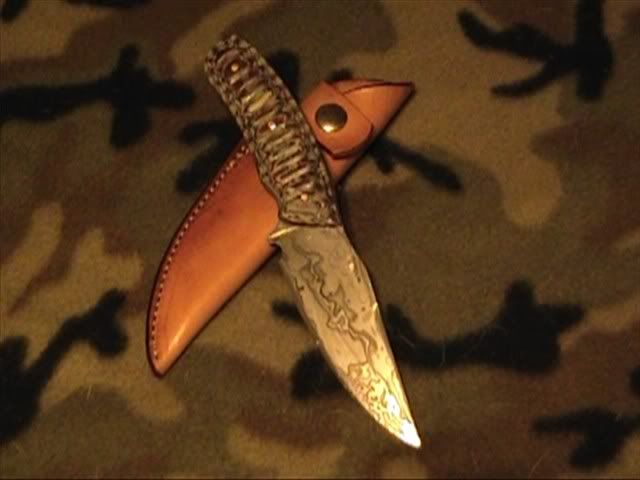I would never have guessed that head bolts stretch and are supposed to be replaced if loosened.
Carey
When placed under tension, all steels "stretch".
Not to hijack the thread, but the question as to whether replacement is required (or not) is best answered by engine assembly procedures.
Engine design (and objectives) will certainly influence assembly procedures.
Starting at the foundation itself (the steel fastener), we have three concerns:
1. Modulus of elasticity- all steel is elastic. It can be "stretched" a given amount, yet still return to its original length.
2. Yield point- this is the point of exceeding elastic limits. Once we reach this point, the steel is permanently elongated (will not "spring back" to original length).
3. Tensile strength- this is how much tension the steel can take before it begins to physically come apart.
Points 1 & 2 are our concerns during assembly, and dictate the measuring method used when tightening the fastener.
The amount of stress placed on the fastener (how much we "tighten" it) will determine if the bolt can be reused.
Strictly speaking, the head bolt performs the function of mating a head to a block, with a gasket in there for sealing purposes. Dissimilar materials (e.g., aluminum head with iron block) accelerates the problems, but methods are used to overcome those obstacles.
Even when the head and block may be of similar composition, they still expand at different rates due to differing thermal mass and combustion location.
The answer to this problem is placing the fastener under tension without reaching its yield point. This is our assurance of constant tension to obtain the clamping force needed for proper sealing.
Gasket construction plays a role here, too, but we'll get to that in a moment.
Ideally, we would determine if we were "within the tension window" by actually measuring bolt length (stretch), but that is not a feasible method for the typical engine design, as most applications have one end of the bolt inaccessible.
I know of three methods to determine how much the bolt has stretched. The first two methods are designed to keep the fastener in an elastic state, while the third method has a completely different objective.
Our first method of assembly- we use
torque as a means of interpreting how much the bolt has stretched. This method more or less works, but is not without problems.
A primary consideration is equalized clamping force around the perimeter of the combustion chamber, lest we risk a blown head gasket. The problem with using torque as the method of measurement is the fact that it tells us more about friction than it does about actual bolt stretch. The more variance in friction from one hole to the next, the greater the probability that the bolts will not be under equal tension.
This is why service manuals will state not only torque specs, but also an exact lubricant to be used when obtaining those figures, all in an effort to minimize frictional variance.
The second method is to use
angle as the final measurement instead of torque. This is a more precise method of interpreting bolt stretch.
The fastener is tightened to "just snug" (point of initial tension), and then an angle gage is used to tighten a specified number of degrees. Since torque is not the method of measurement, frictional variances are of no concern, thus leading to more equalized clamping.
In many situations, the engine builder/assembler will use a torque wrench to assess initial tension (you know, that "just snug") and then finish with angular measurement.
The third method of head bolt assembly is what is commonly known as "torque to yield" (TTY). This is really nothing new, as it is a spinoff of the second method. But in this instance, we are
intentionally stretching the bolt beyond the yield point (the point where it is no longer elastic- it remains elongated after tension is released).
Why in the world would we want to go past the yield limit?
Remember, the goal is equalized clamping force around the perimeter of the chamber. If all the bolts have been pushed beyond elastic limit, they now have equal tension.
The caveat is that bolts subjected to this procedure cannot be reused- once we exceed the yield point, the bolt will continue to elongate. IOW, there is no accurate way to determine equal tension upon engine reassembly.
"But wait a minute, now. We no longer have the elasticity required to cope with those expansion problems you mentioned above!"
Yes, we do. The needed elasticity is no longer a function of the fastener- it's achieved through the gasket construction via advances in gasket technology.
So, can we reuse our head bolts?
As always, it depends.
Your parts salesman will tell you to always buy new bolts, even if it's for a motor mount.
If you have a "modern" engine with aluminum heads, rest assured the manufacturer probably used TTY during assembly, and you should replace them (the head bolts) if the engine requires disassembly.
If you're rebuilding the factory engine in Granpa's '71 pickup, clean 'em up, inspect for thread damage, and reuse. (Naturally, this assumes they have not been overtightened during a prior assembly.)
To bring this thread back into perspective, the notion of whether a head bolt should be reused (or not) will tell us very little, if anything at all, about the material composition of that bolt.
Strong steel, weak steel. Hard steel, soft steel. They all "stretch".


